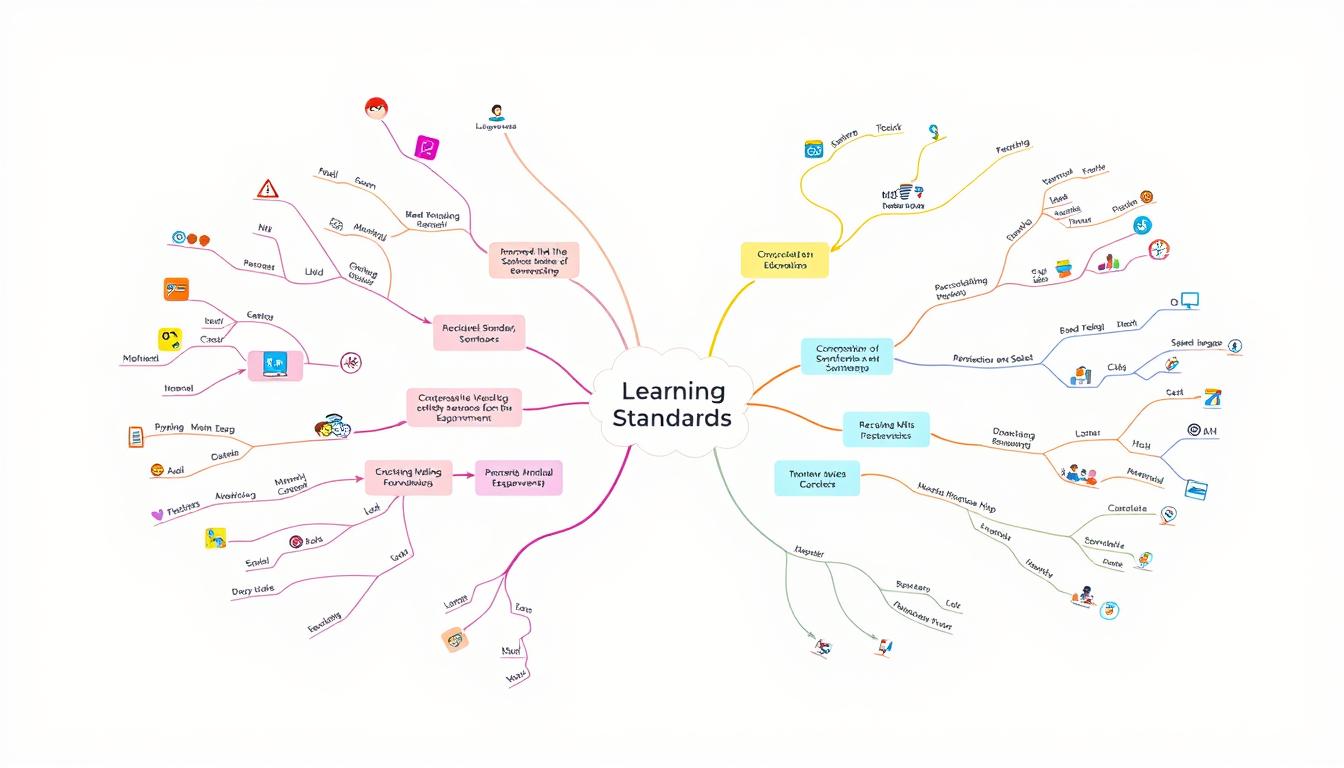In today’s education world, it’s key for teachers to understand learning standards. Knowing how to break down a learning standard is essential for effective teaching. New York City started using standards-based grading in April 2020. Since then, schools all over the U.S. have seen the need to change how they grade students.
Learning standards are a new way to teach that’s different from old grading systems. Hall Middle School in California shows how education can really change. By breaking down learning standards, teachers can make learning more personal and meaningful for students.
Learning standards need careful planning, teamwork, and a focus on student growth. California has been pushing for standards-based learning since 2001. This shows how complex and vital this educational method is.
Key Takeaways
- Standards-based learning focuses on student performance and skill mastery
- Transformation requires systematic approach and community involvement
- Multiple assessment types provide comprehensive student evaluation
- Reducing student stress is a critical outcome of effective standards
- Collaborative curriculum design enhances educational quality
Understanding the Fundamentals of Learning Standards
Learning standards are key in education in the United States. They tell students what they should know and do at each grade. This makes learning consistent and helps students achieve the same goals.
What Are Curriculum Standards?
Curriculum standards are detailed plans for what students should learn. They guide teachers on what to teach and help students meet goals. These standards focus on main subjects and what students need to know and do.
The Role of State Education Departments
State education departments are vital in setting learning standards. They make sure schools teach the same things. This way, students get a good education no matter where they live.
- Develop comprehensive educational guidelines
- Ensure educational equity across regions
- Create benchmarks for student achievement
- Monitor and update standards regularly
Core Components of Learning Standards
Learning standards have important parts that help teachers:
- Content area expectations
- Grade-level specific objectives
- Performance indicators
- Skill progression markers
Standards-based education aims to enhance learning outcomes, preparing students for college, postsecondary training, or career paths.
Research shows 95% of students can learn well with good curriculum standards. This shows how important clear learning standards are for success.
How to Break Down a Learning Standard
Breaking down learning standards is key for teachers. It helps turn big curriculum plans into real classroom actions. Teachers need to analyze and break down educational goals carefully.
To break down learning standards well, teachers should take a few steps:
- Find the main subject and grade level needed
- Look at the skills and knowledge in the standard
- Make hard terms easy to understand
- Set clear learning goals
“Understanding how to break down learning standards is like creating a roadmap for student success” – Educational Research Insights
Robert Marzano’s study shows standards are complex. He says we’d need more school years to cover all standards. Teachers pick “power standards” to deal with this problem.
The process of breaking down standards includes a few important steps:
- Analyze the standard’s language – Find the action verbs and what’s expected
- Split big skills into smaller, easier-to-learn goals
- Make clear how to check each part
- Match lessons with the broken-down standard
Learning how to break down standards helps teachers. They can give more focused lessons. These lessons meet state rules and help each student learn better.
Implementing Standards Through Benchmarks and Assessment
Learning standards need a smart plan for checking how well students learn. Schools in cities often see only 20% to 50% of students meet the mark.
To really know if students are learning, we need a detailed way to check. Good ways to check learning are key to seeing how students grow.
Creating Measurable Learning Objectives
Setting clear goals is vital to see how students do. Here are some tips:
- Use a standards-based grading (SBG) scale from 1-4
- Define specific skill mastery levels
- Create objectives that align with curriculum standards
The goal is not just to test, but to understand each student’s learning journey.
Developing Performance Indicators
Performance indicators help teachers see how students are doing. In a class of 30, 15 to 24 might not meet grade-level standards. This shows how important it is to measure well.
| Mastery Level | Performance Description |
|---|---|
| 1 | Little to no mastery |
| 2 | Limited mastery |
| 3 | Full mastery |
| 4 | Advanced mastery |
Aligning Assessment Methods
Picking the right tools to check learning is key. The Let’s Go Learn’s ADAM assessment shows a 0.85 correlation to state tests. This shows it can really measure well.
Teachers should look beyond just if students finish. They should focus on if they really get the skills. With strong ways to check learning, schools can give deeper insights into what students know.
Conclusion
Learning standards are key for great education. Teachers break them down to help students grow and learn. This process needs careful thought and a clear plan.
Understanding learning standards takes many steps. Teachers make learning goals clear and real. This helps them plan lessons that meet big educational goals.
Teachers must keep improving their teaching methods. They need to be ready to change as new research comes out. The best teachers see learning standards as a chance to grow and help students.
Great education comes from careful planning. Teachers who know how to use learning standards create exciting learning places. These places help students do well and get ready for the future.



